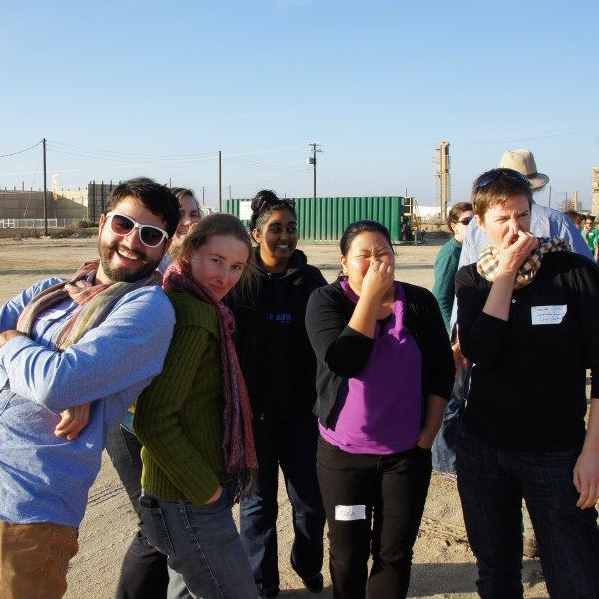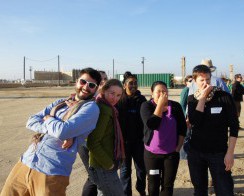Mix and Match Your Custom Legal Education


With apprentices, learning about fracking and air pollution in CA’s Central Valley.
Today, President Obama made the bold suggestion that, in order to make legal education more affordable, law school could be reduced to two years, possibly followed by a year of apprenticeship or internship. If they haven’t started discussing the idea already, I imagine that every state bar association and law school in the country is soon to at least contemplate the notion of a 2-year degree program.
California is among the already hip states that allow lawyers to be trained by a combination of methods, if desired. A prospective lawyer could do one year of law school and three years of apprenticeships, two and two, or even go for a full four years of apprenticeship. The recipe that combines a bit of law school with a bit of apprenticing is basically how lawyers are made in the United Kingdom, except that the apprenticeship part is given odd names like pupillage, training contract, and devilling. I personally like apprenticeship, because it just sounds better and it is the most affordable form of legal education.
That said, the 1+3 formula could be worth contemplating for some prospective lawyers. With just one year of law school, a student gets exposed to the eight basic legal subjects, experiences the rigor of study and test taking, and gets some of the prestige of having been accepted into and studied – at least to some extent – in a law school.
But the first year of law school is not for everyone. Students quickly become stressed, competitive, and even downright miserable. I often felt lifeless sitting in class, and found it hard to focus on hours of lecture and discussion. I’m pretty sure that the majority of what I learned during law school I actually learned outside of law school, studying on my own, and getting involved in real legal work as much as possible. I would have chosen the apprenticeship route in a heartbeat, if I had known it was a real option.
Taking the four-year apprenticeship route likely means custom designing a diverse legal education. My apprentices, Yassi and Ricardo, are tailoring their courses of study to their own learning styles, through a combination of hands-on legal work, in-class learning, group study, audio courses, and independent study. Early in the year, they audited part of a law school course on representing small businesses. Now they are enrolled in a community college course on legal research and writing. I’m actually amazed by the initiative they are taking to ensure that they are getting a thorough education – finding and enrolling in classes, organizing study sessions with other apprentices, and assigning each other reading for discussion. I was tickled the other day to hear that they had passed around a chapter of the Examples & Explanations book on Contracts and made an appointment to discuss it with each other. I had nothing to do with that. It’s a beautiful thing, really.
My apprentices and I have also discussed the possibility of mixing and matching apprentices and mentors. One of them might want to apprentice for six months under an environmental lawyer or an international human rights lawyer, for example. As the apprenticeship movement grows, perhaps a swap and trade network of apprentices and mentors could form.
The possibilities seem endless, and the point is that four years of apprenticeship could be a blank canvas on which to explore that infinite potential. Our conventional legal education system moves like a slow and lumbering dinosaur, and I just don’t trust it to change at the rate that our vulnerable society and delicate planet need it to change. An apprenticeship, however, is a nimble education program, able to respond to the real needs of the apprentices, their future clients, and the communities and world they will ultimately serve. As apprentices develop and share a multitude of custom-designed curricula, materials, techniques, and practical learning experiences, I predict that the apprenticeship movement will set off an era of rapid innovation in legal education.

Leave a comment
You must be logged in to post a comment.